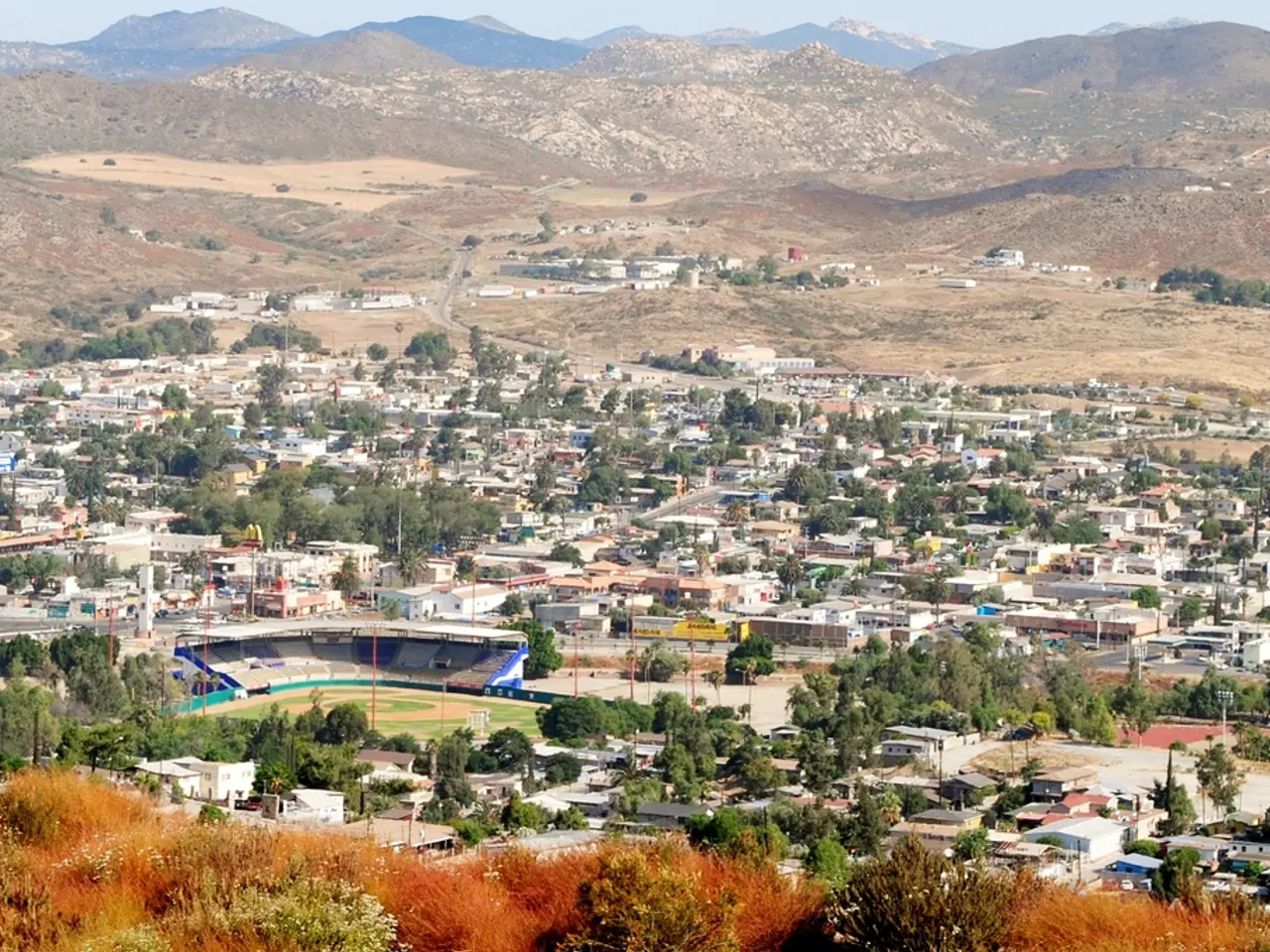Expanded allocation of 15,000 public housing units targeted towards younger residents in Seoul by the government
The South Korean government has announced an ambitious 2035 public housing plan aimed at addressing the escalating real estate prices in the greater Seoul area. The initiative, which focuses on expediting and increasing the supply of public housing units, particularly for young people and ordinary citizens, is part of a broader strategy to manage national properties in line with an evolving perspective [1][2][3].
The plan involves the redevelopment of old public buildings and the utilization of idle land in city centers and around station areas. This approach will result in the delivery of approximately 35,000 new public housing units by repurposing aging government-owned properties and vacant land, such as the Yongsan Reservoir, Jongno Complex, and other urban sites [1][2][3].
The government has decided to advance the supply of about 20,000 youth rental housing units, initially planned for 2035, to earlier dates ranging from 2027 to 2031. Additionally, it will uncover additional dwellings by exploring old buildings over 30 years old in central areas like Seongsu-dong and unused properties such as the Gwangmyeong Tax Office and Seoul Immigration Office, adding approximately 15,000 more units [1][2][3].
Finance Minister Koo Yun-cheol, who manages the government's plan, stated that state-owned assets should play a proactive role in the competition for national growth. The goal is to expand affordable housing options through the latest plan [4].
The housing initiative is driven by the need to address the higher real estate prices in the capital region and contribute to national growth. By focusing on key high-demand areas near central Seoul, the plan aims to mitigate urban housing shortages quickly and relieve housing price pressure by increasing the affordable rental housing stock [1][2][3].
The plan targets youth and low-income groups to help reduce their vulnerability to rising real estate prices. However, some critics have highlighted the need for sustainable public rental housing financing and cautioned against market-based land sales strategies historically linked to soaring prices. Increasing the housing subsidy budget and shifting focus to long-term affordable rentals like those seen in Austria have been suggested as complementary approaches [4].
The latest plan includes the development of unused government land and properties in central Seoul and nearby cities such as Gwangmyeong. The government's housing initiative is managed by the Ministry of Economy and Finance, and Minister Koo Yun-cheol's statement indicates a shift in the government's approach to managing national properties [1][2][3].
The plan was announced on Tuesday, marking a significant step towards addressing the housing crisis in the capital region and promoting national growth. The government's focus on using state-owned assets for national growth, as reflected in Minister Koo Yun-cheol's national property management plan, underscores the importance of this initiative [1][2][3].
By 2035, the total number of public housing to be supplied will be 35,000. This represents a substantial increase in affordable housing options for the younger generation, low-income households, and newlyweds in the cities of Seoul and Gwangmyeong.
References: [1] https://www.koreaherald.com/view.php?ud=20220628000883 [2] https://www.korea.net/news/news.php?id=222661 [3] https://www.hankyung.com/economy/article/2022062854866 [4] https://www.koreatimes.co.kr/www/news/biz/2022/06/370_309253.html
The South Korean government's 2035 public housing plan involves the utilization of idle land and old government buildings, which is managed by the Ministry of Economy and Finance, to increase and expedite the supply of public housing units, as Finance Minister Koo Yun-cheol mentioned. This strategic approach is a step towards expanding affordable housing options in business districts, particularly in Seoul and Gwangmyeong, for young people and ordinary citizens.




